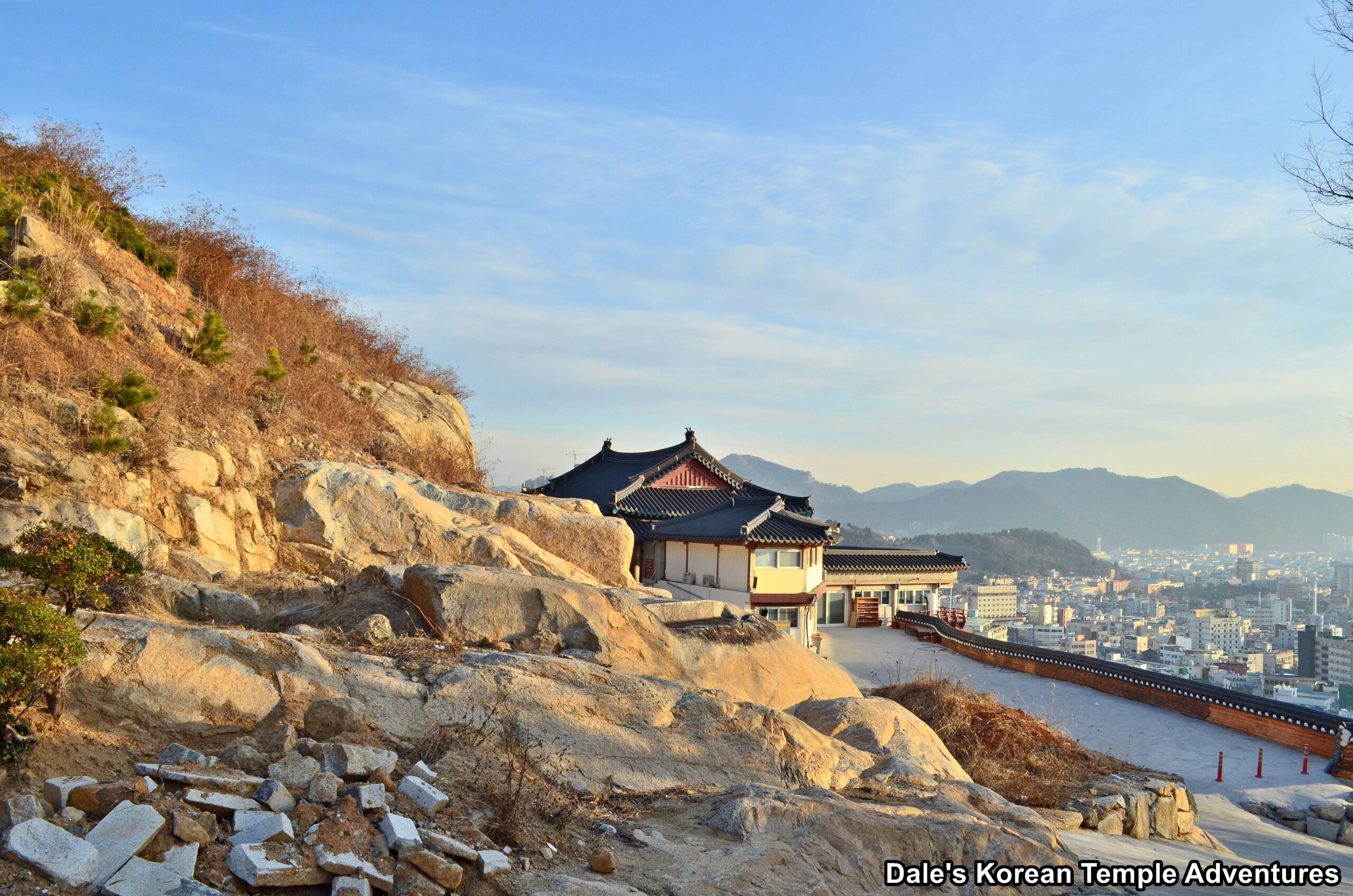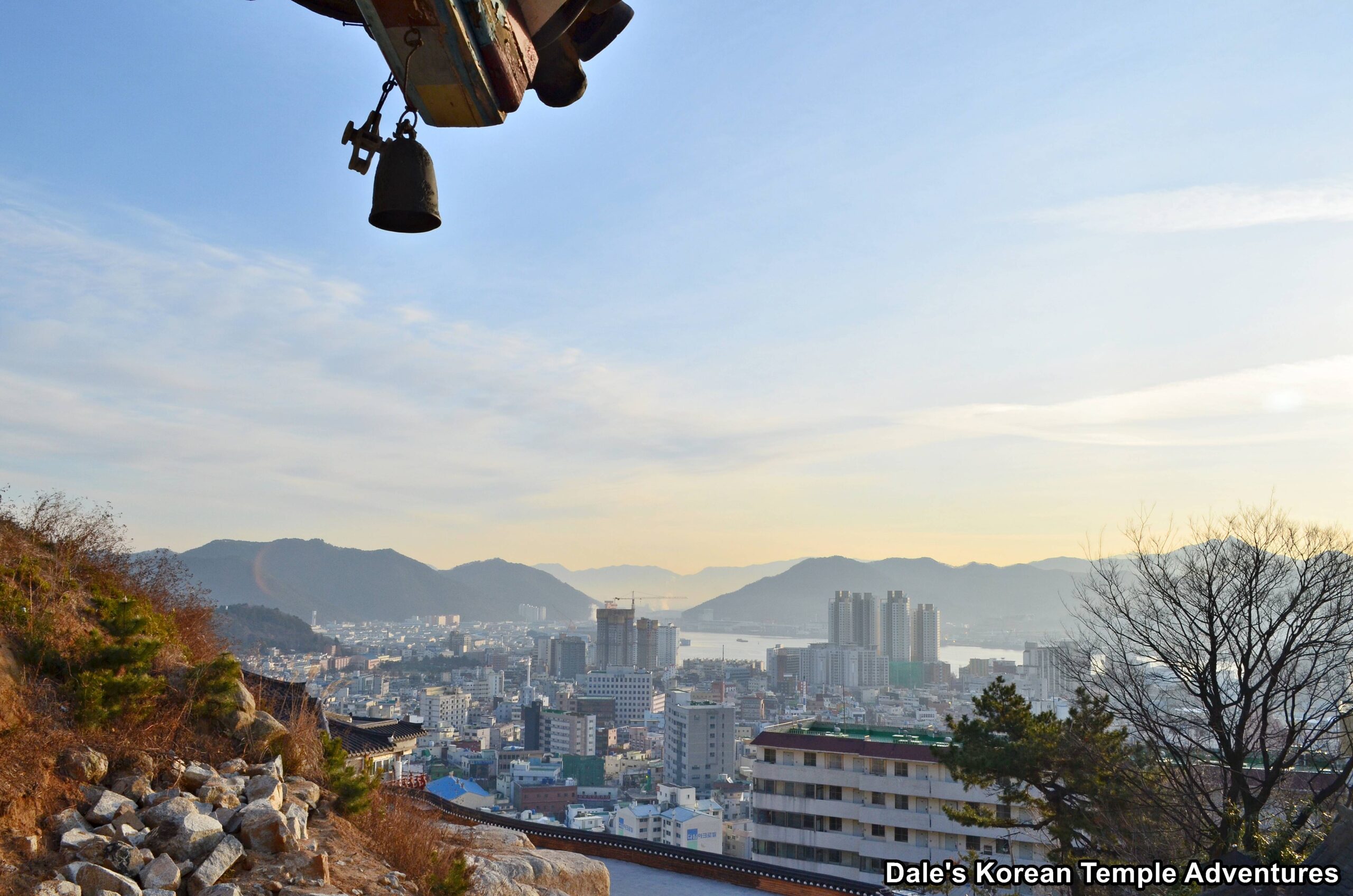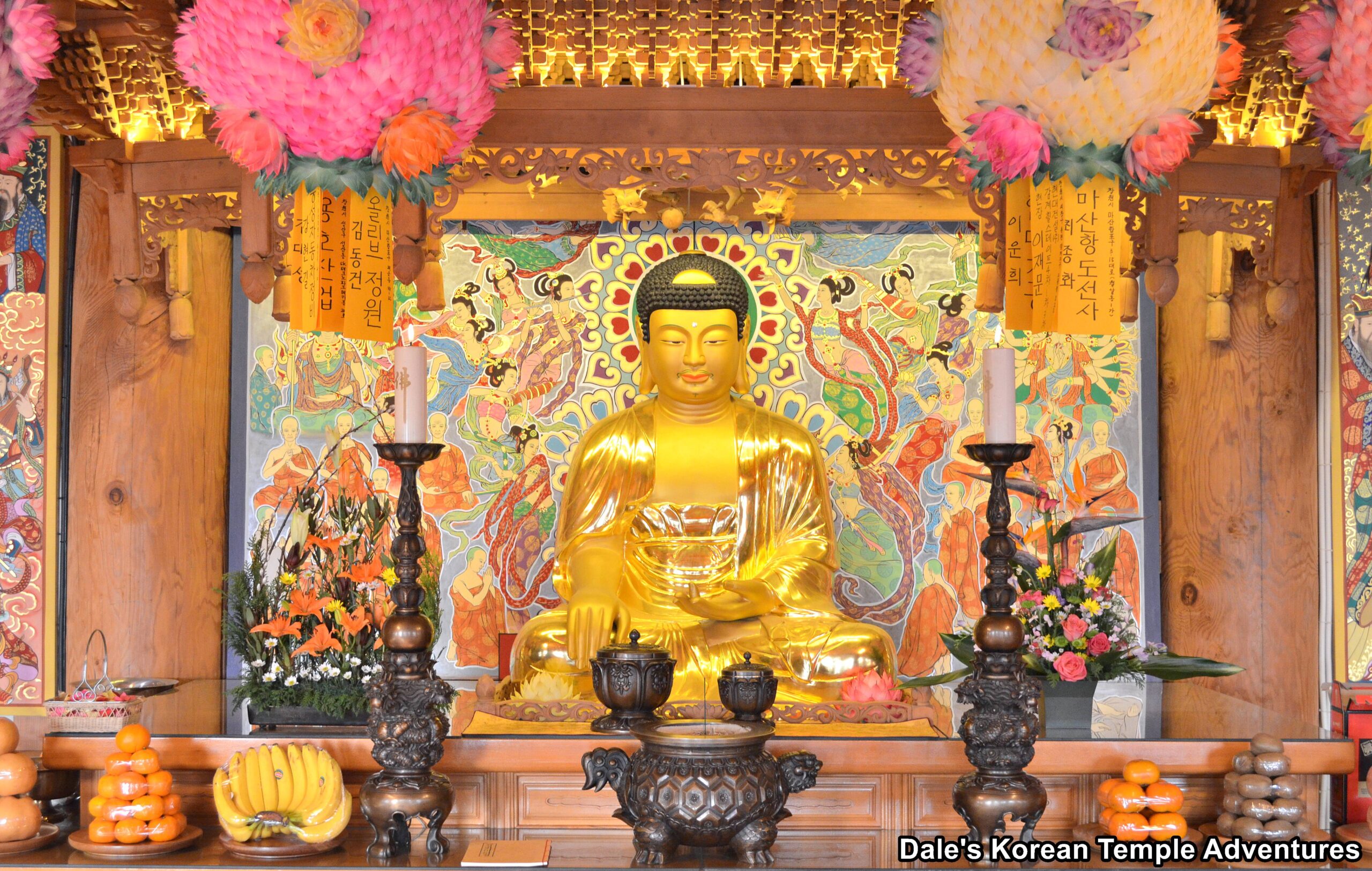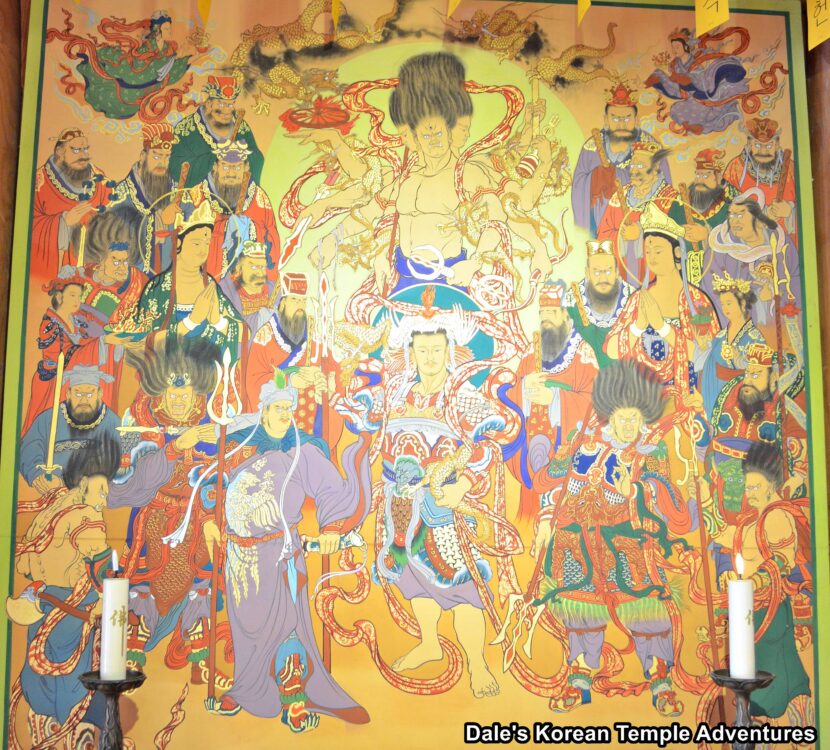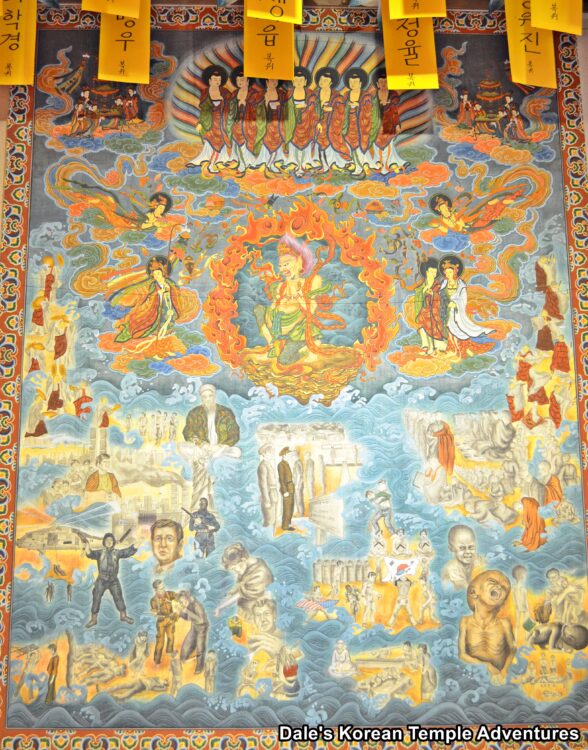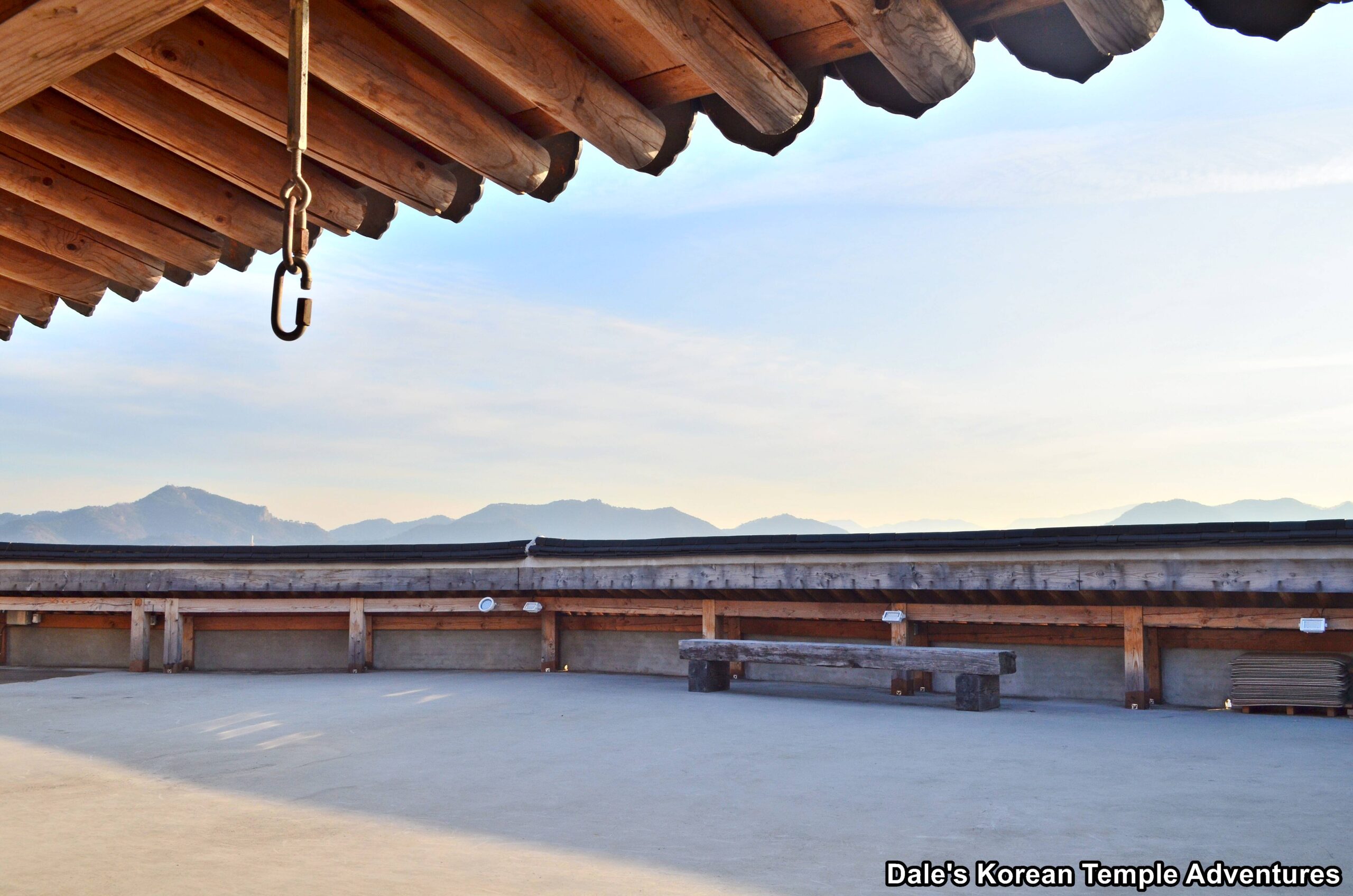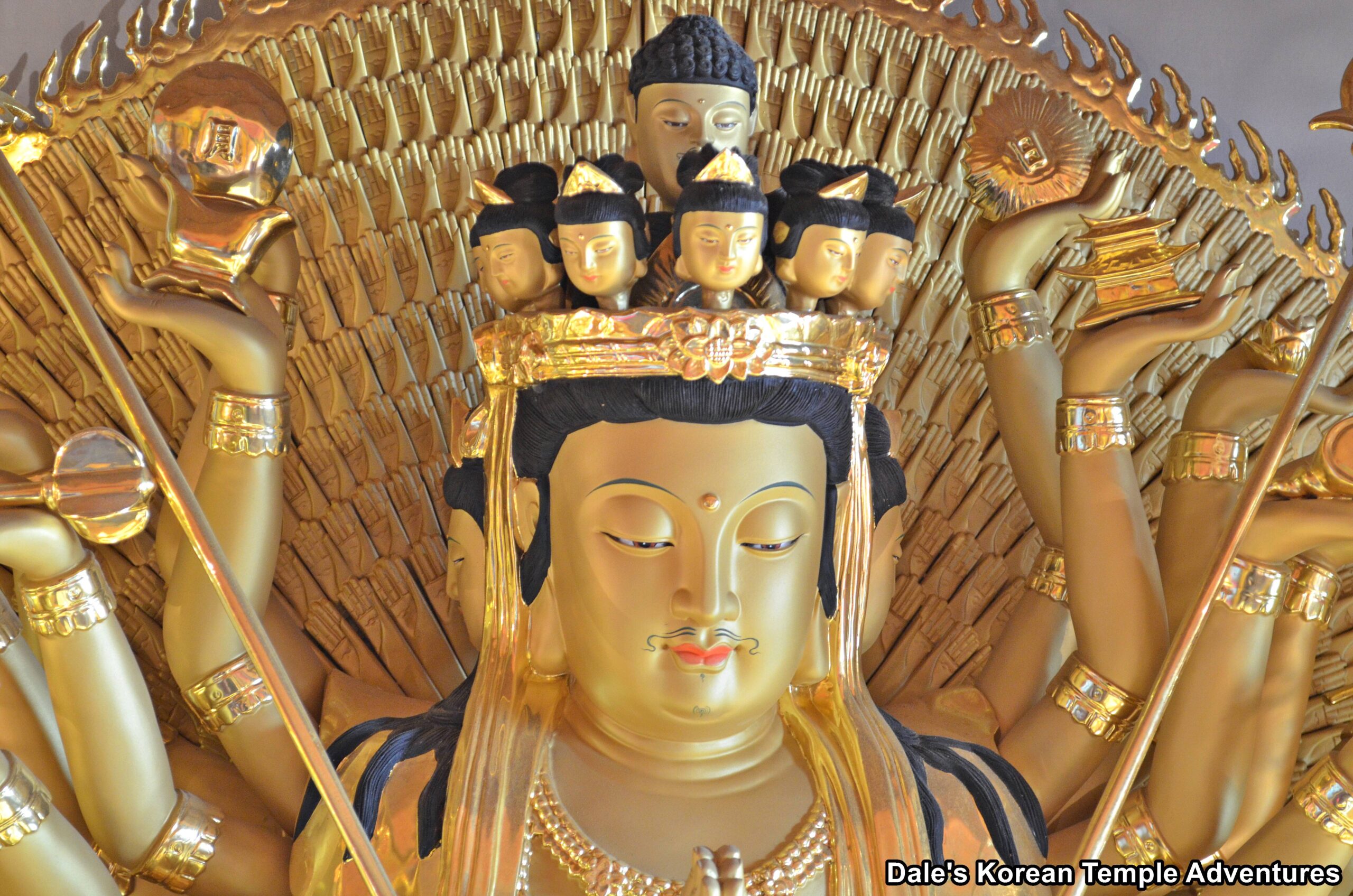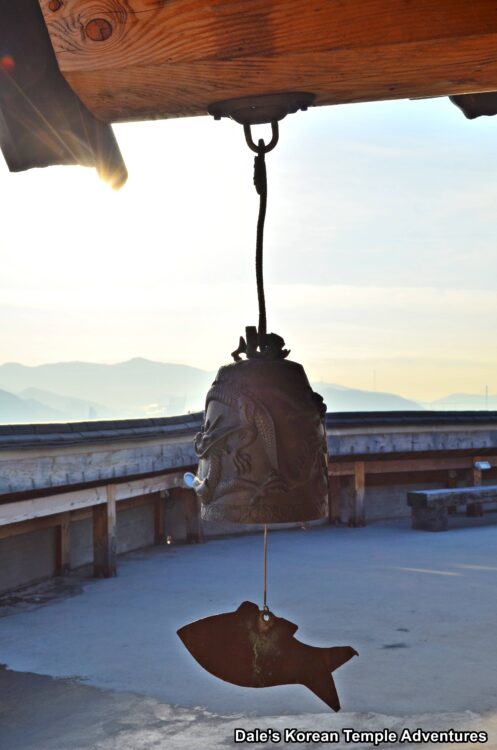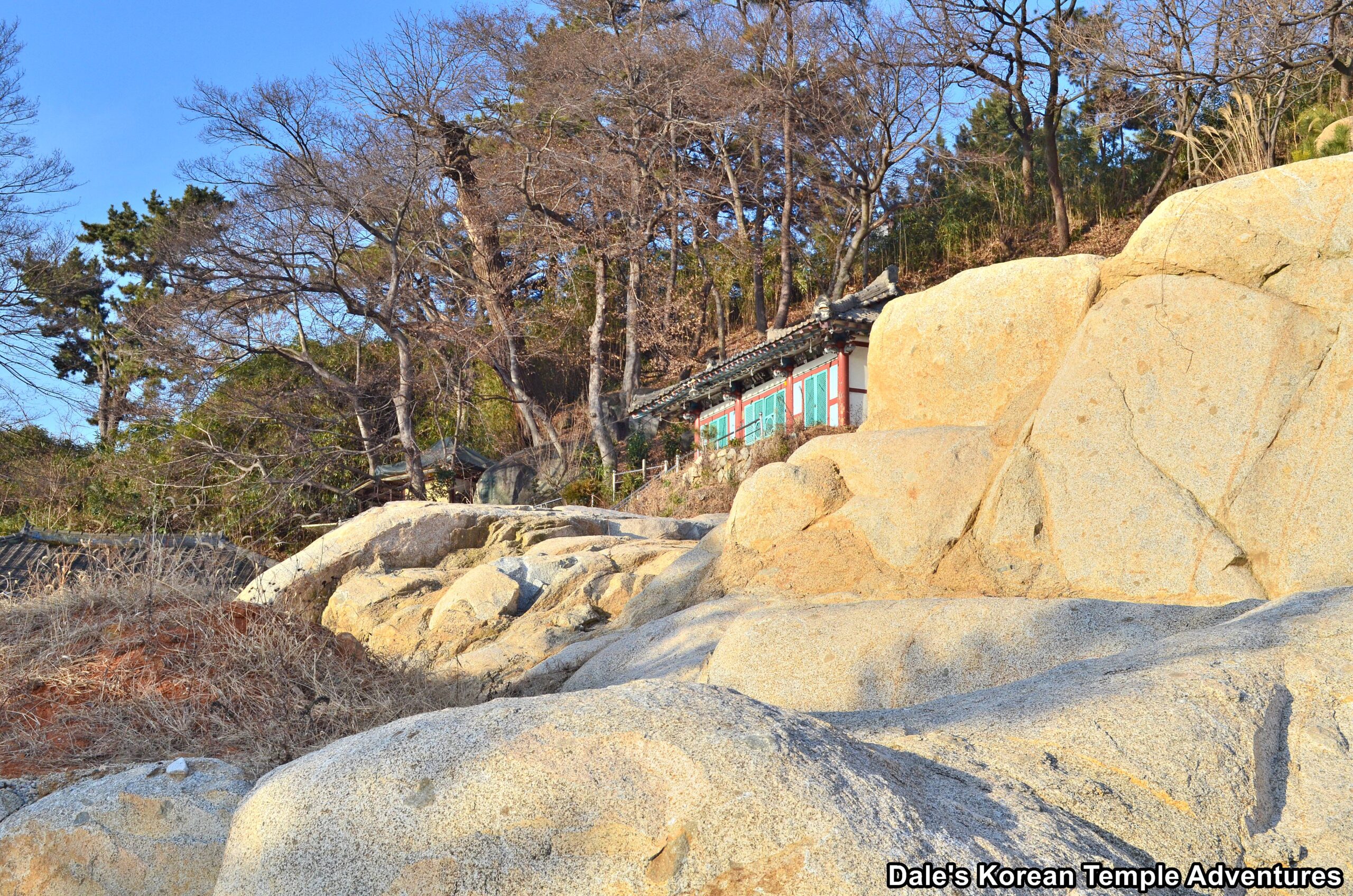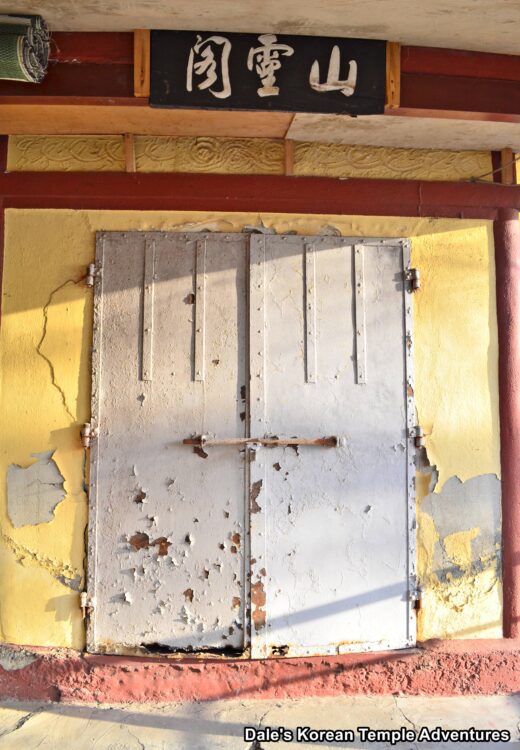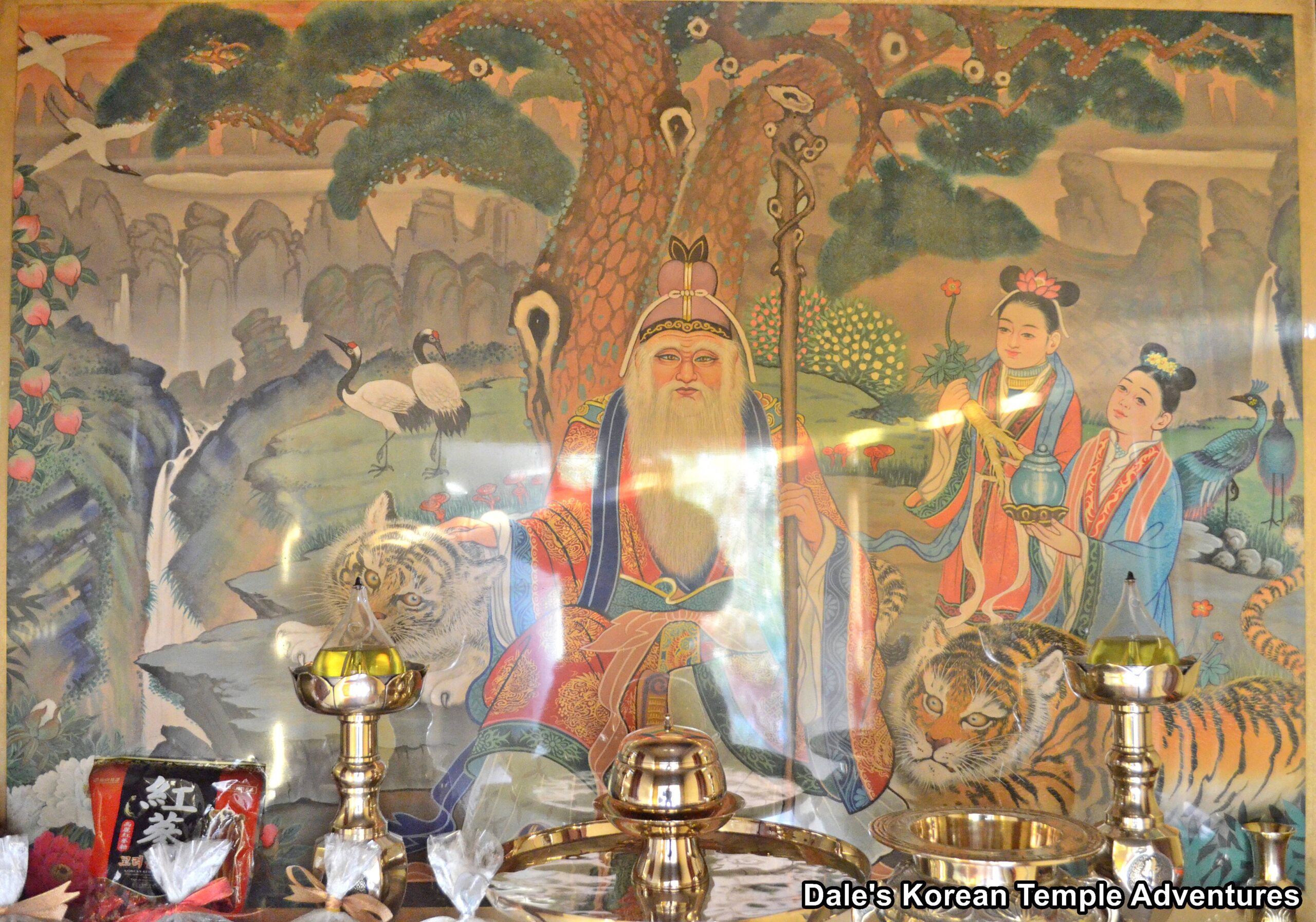Seongdeokam Hermitage – 성덕암 (Masan, Gyeongsangnam-do)
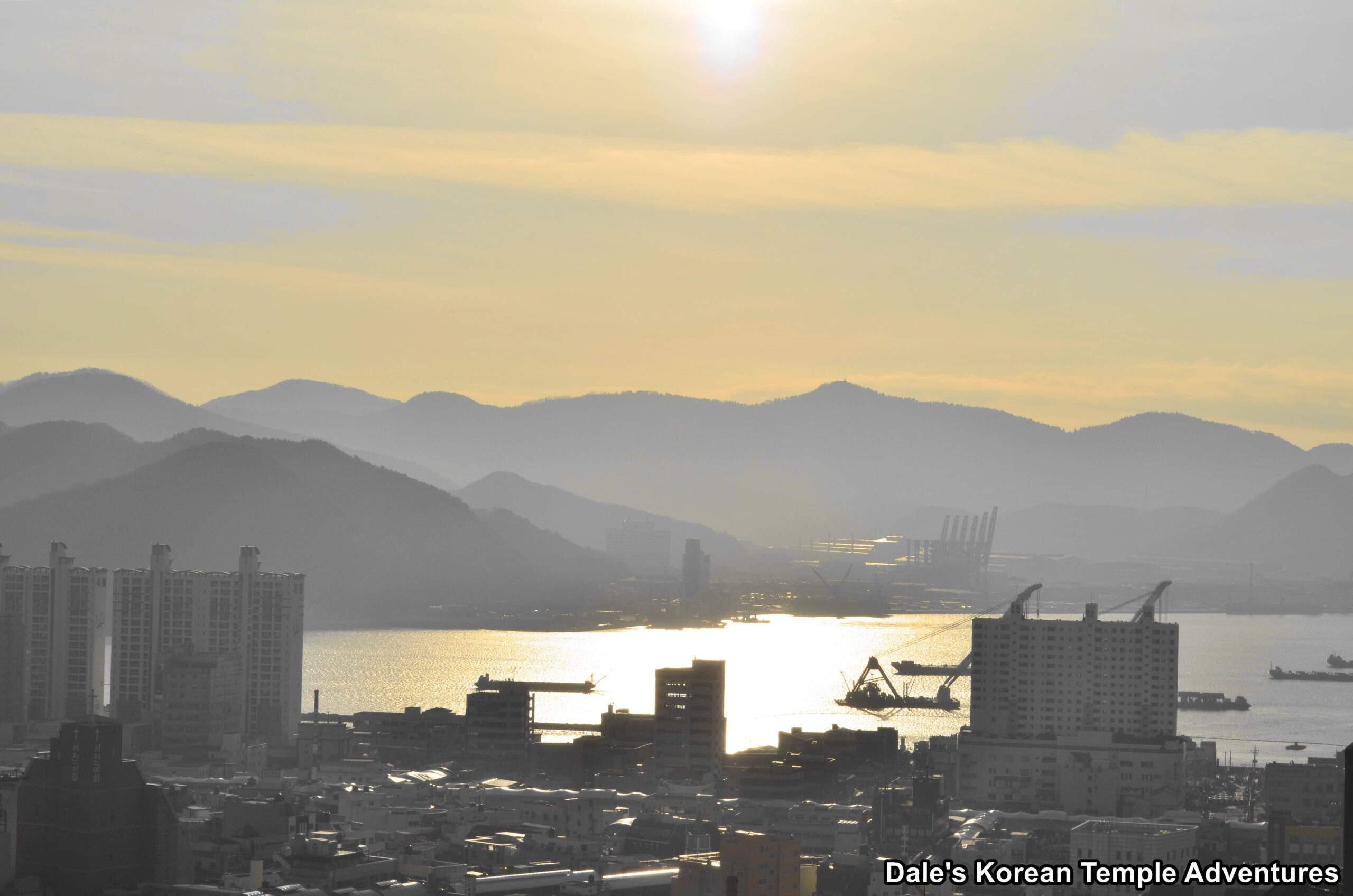
Hermitage History
Seongdeokam Hermitage is located in Masan, Gyeongsangnam-do. More specifically, it’s located on the north-eastern slopes of Mt. Daegoksan (516.8 m). Seongdeokam Hermitage was first built in 1933 by the monk Baekyongseong – 백용성. The hermitage was built for the well-being of local fishermen and townspeople, which makes sense, since it’s located so close to the Masan harbor. Currently, Seongdeokam Hermitage is home to ten different buildings, gates, and shrines spread throughout the entire grounds. Like most new temples, Seongdeokam Hermitage continues to expand and grow.
Hermitage Layout
After navigating your way down some local side-streets, you’ll finally be welcomed to Seongdeokam Hermitage by a three-in-one modern shrine hall. Around the exterior walls to this multi-purpose building, at least at the entry, are various incarnations dedicated to Gwanseeum-bosal (The Bodhisattva of Compassion).
It’s just to the left of this building, and taking a right in the bend in the road, that you’ll backtrack towards the three-in-one shrine hall. The first thing to greet you at this building is the hermitage’s kitchen. Just a little further along, and you’ll next come to a passageway that will direct you towards the hermitage’s main hall, the Daeung-jeon Hall. Before stepping inside the Daeung-jeon Hall, take a step out onto the terraced area that gives you an amazing view of the shimmering port off in the distance. The view is especially beautiful in the early morning hours.
As for the Daeung-jeon Hall, and stepping inside this shrine hall, you’ll find a statue of Seokgamoni-bul (The Historical Buddha) resting all alone on the main altar. He’s joined on either side, under their own canopies (datjib), by Gwanseeum-bosal to the left and Jijang-bosal (The Bodhisattva of the Afterlife) to the right. But it’s the Shinjung Taenghwa (Guardian Mural) and Gamno-do (Sweet Dew Mural) that are the highlights of the Daeung-jeon Hall. First, the Shinjung Taenghwa almost appears cartoonish in its design. As for the Gamno-do, it follows the traditional form of a Gamno-do mural: it has three sections. The upper and middle sections follow the traditional standards of the genre with Buddhas and Bodhisattvas in the upper section and an Agwi (Hungry Ghost) in the middle section. However, where the Gamno-do mural at Seongdeokam Hermitage diverges is in the bottom portion of the painting. Instead of realistically portraying the six realms of existence in some ancient or mythical form, the Gamno-do mural at Seongdeokam Hermitage is firmly rooted in the past fifty years of world history. More precisely, instead of having people that might look like they inhabit a world centred around a Goryeo or Joseon Dynasty time frame, we see images of those people that have shaped our world in the present. In the mural, rather remarkably, you’ll see painted images of Osama Bin Laden, George W. Bush, 9/11, the DMZ, the Vietnam War in the form of the famous picture of the national police chief of South Vietnam executing a Vietcong fighter, the Gwangju Uprising from May 18th to 27th, 1980, and the famine in Africa during the 1980s. It truly is something special and a one-off.
To the rear of the three-in-one shrine hall structure is the Gwaneum-jeon Hall. Housed inside the Gwaneum-jeon Hall, you’ll find beautiful paper lotus flowers hanging from the ceiling. And resting on the main altar, you’ll find a multi-armed and headed statue dedicated to Gwanseeum-bosal.
The final set of shrine halls at Seongdeokam Hermitage are located to the left, rear of the three-in-one shrine hall that includes the Daeung-jeon Hall. Just past the monks’ dorms, and housed a little further up the hillside, is the Samseong-gak Hall, the Sanshin-gak Hall, and the Yongwang-dang Hall. The largest of the three is the Samseong-gak Hall. This shaman shrine hall houses a triad of paintings. In the centre hangs an older Chilseong (Seven Stars) mural. This painting is joined to the right by a more modern Chilseong painting; while to the right, you’ll find mural dedicated to Dokseong (The Lonely Saint).
The final two shrine halls at Seongdeokam Hermitage, which looks more like shipping containers with their large, heavy metal entry doors, is the Sanshin-gak Hall and the Yongwang-dang Hall. Housed inside the Sanshin-gak Hall is an atypically painted mural of Sanshin who looks almost elfish in appearance. But you be the judge.
How To Get There
From the Masan Intercity Bus Terminal, you’ll need to take Bus #101. You can take this bus or Bus #122 at the Daeshin Bookstore, which is situated just outside the terminal. You’ll then need to take either bus for ten stops and get off at the Burim Market stop. From this stop, you’ll need to walk towards the neighbouring hillside for ten minutes to get to Seongdeokam Hermitage.
Overall Rating: 6/10
Seongdeokam Hermitage is home to quite a few unique features like the modern Gamno-do (Sweet Dew Mural) with the likes of Osama Bin Laden and George Bush on it. Additionally, you should have a look for the elfish Sanshin (Mountain Spirit) mural and the ornate Gwanseeum-bosal (The Bodhisattva of Compassion) statue inside the Gwaneum-jeon Hall. And to top it all off, the hermitage enjoys a beautiful scenic view of the neighbouring port of Masan.
